Who painted Henry?
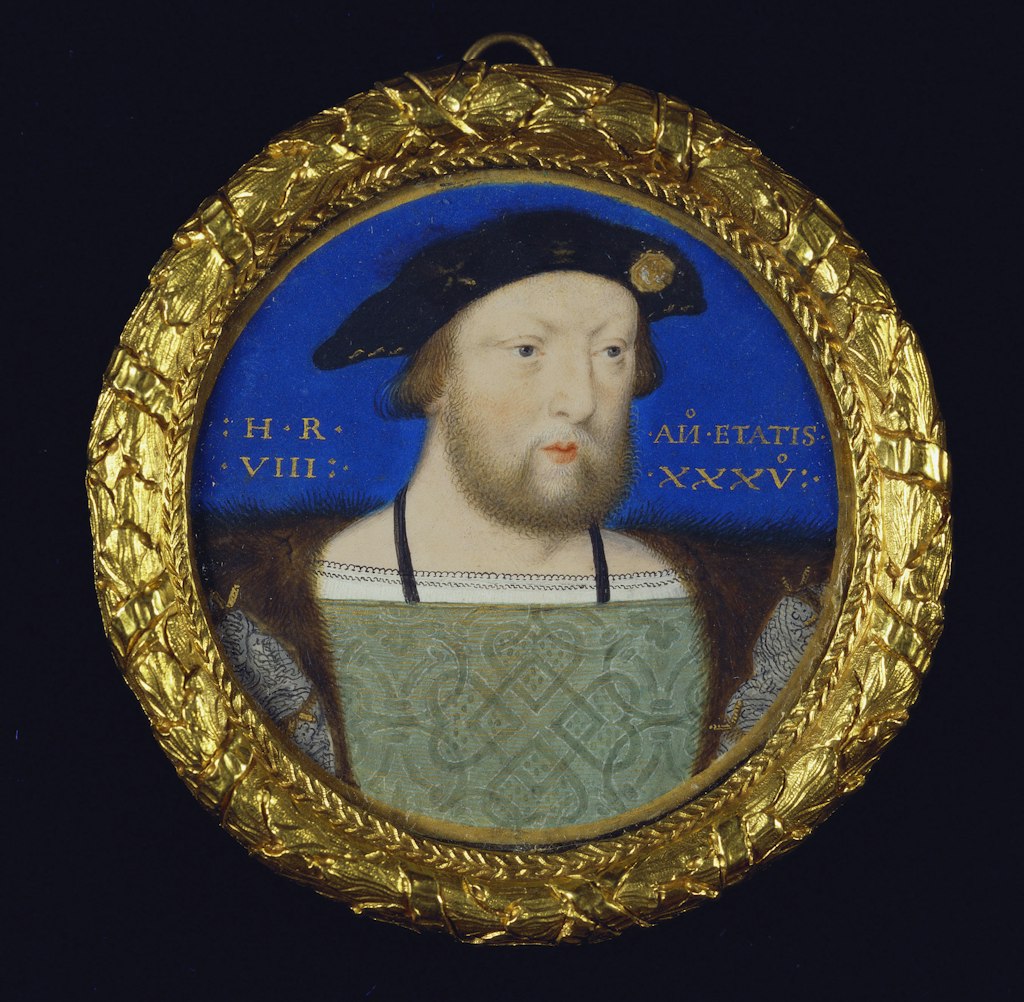
Lucas Horenbout Henry VIII (1491-1547), June 1526 – June 1527, watercolour on vellum laid on playing card (the ace of diamonds), 4.7 cm (diameter), Royal Collection Trust, RCIN 420640
One of the enduring mysteries surrounding the Gallery’s 16th-century portrait of Henry VIII is who painted it or, more precisely, who produced the ‘pattern’ on which it is based.
In an earlier post, we had a look at how such works were created in the Tudor period and noted that our Henry was not based on the prototype developed by Hans Holbein, the king’s painter from about 1535.
There was another artist who could have produced a likeness in the immediate presence of the monarch himself: Lucas Horenbout, who earned slightly more than Holbein as the ‘Royal Pictor Maker’ from 1525 to his death about 20 years later. Could he be the artist ultimately responsible for the design from which our painting is derived?
In considering this question, we need to look again at the characteristics of our portrait and at what was happening in portraiture at the time.
This was the period when the genre was first emerging. The requisite skills did not exist anywhere in England at the start of the century and needed to be imported from the Netherlands. Henry’s court had assembled a workshop of practitioners capable of producing sumptuously illuminated manuscripts and legal documents, who also turned their hands to a wide range of activities, including the painting of panels.
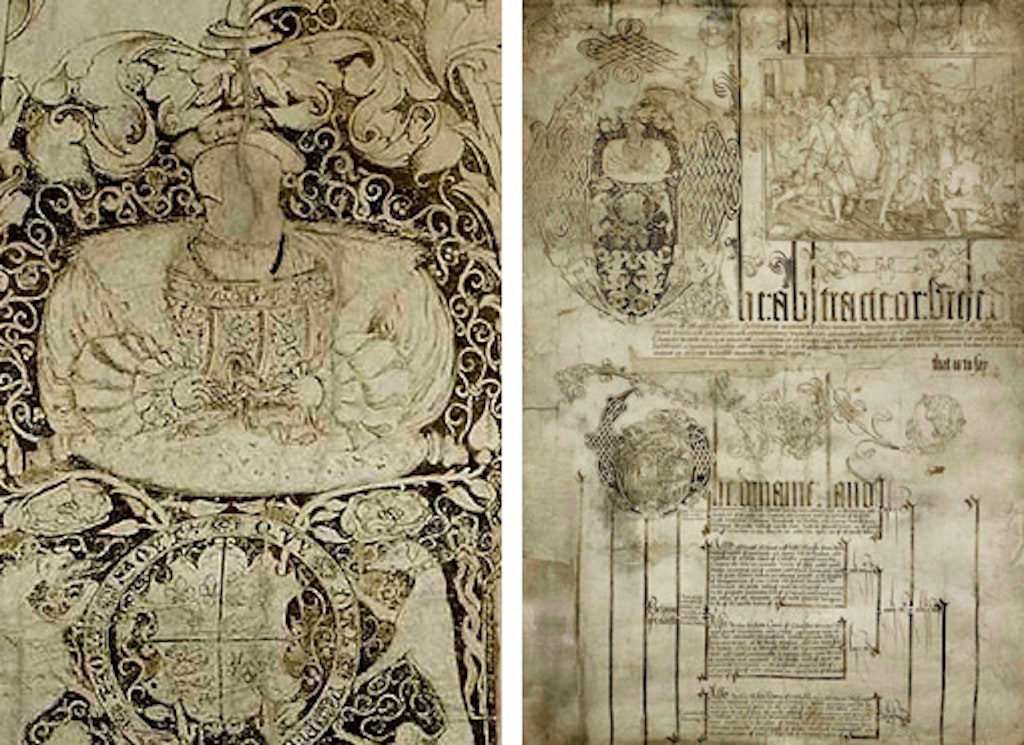
This legal document, from the British Library, documents the dissolution of the monastery at Colchester in 1539. The detail on the left shows a depiction of Henry, similar in conception to the way he is depicted in the Art Gallery of NSW panel
Henry’s greatest coup, in his own eyes, even more than his subsequent employment of Holbein, was securing the services of the entire Horenbout family (including Lucas, his father Gerard and sister Susanna), who were court painters to Margaret of Austria, Regent of the Netherlands, and the foremost exponents of the Ghent–Bruges school of illuminators.
They were responsible for work transforming the artistic quality of documents such as court plea rolls, which previously had been illustrated with crude pictograms by humble local artisans.
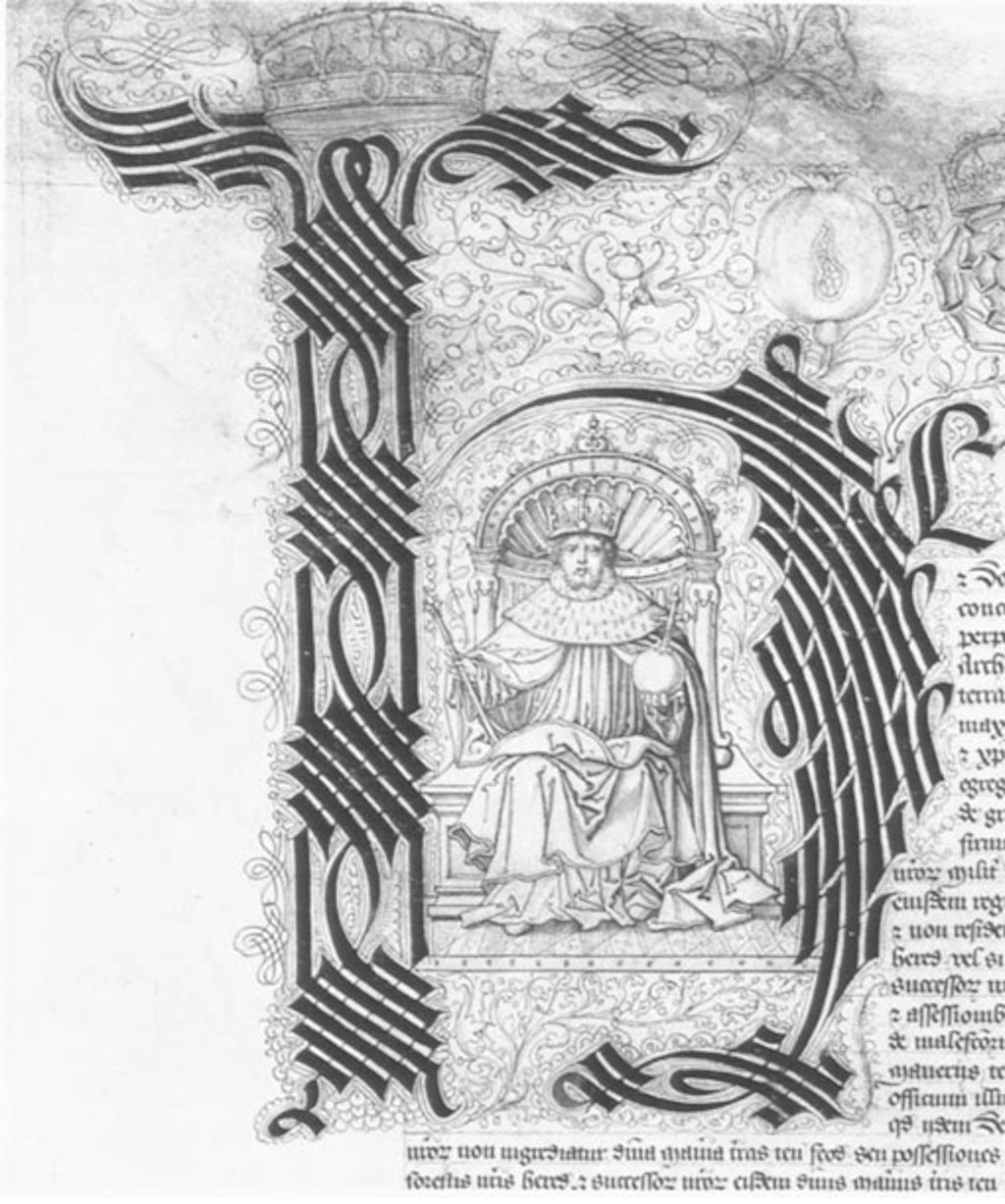
A tiny portrait illuminating the initial H in the letters patent of Henry VIII for Thomas Forster – now in the Victoria & Albert Museum – is attributed to the illustrious Horenbout family, and it relates compellingly to the Henry panel in Sydney.
It is also a vital piece of evidence for the history of the portrait miniature as it seems be the immediate precursor of the earliest portrait miniatures known to have been produced in England, which are head-and-shoulder portraits of the young Henry VIII attributed to Lucas Horenbout. Two of these are in the Royal Collection Trust in the UK: one with a beard and one without.
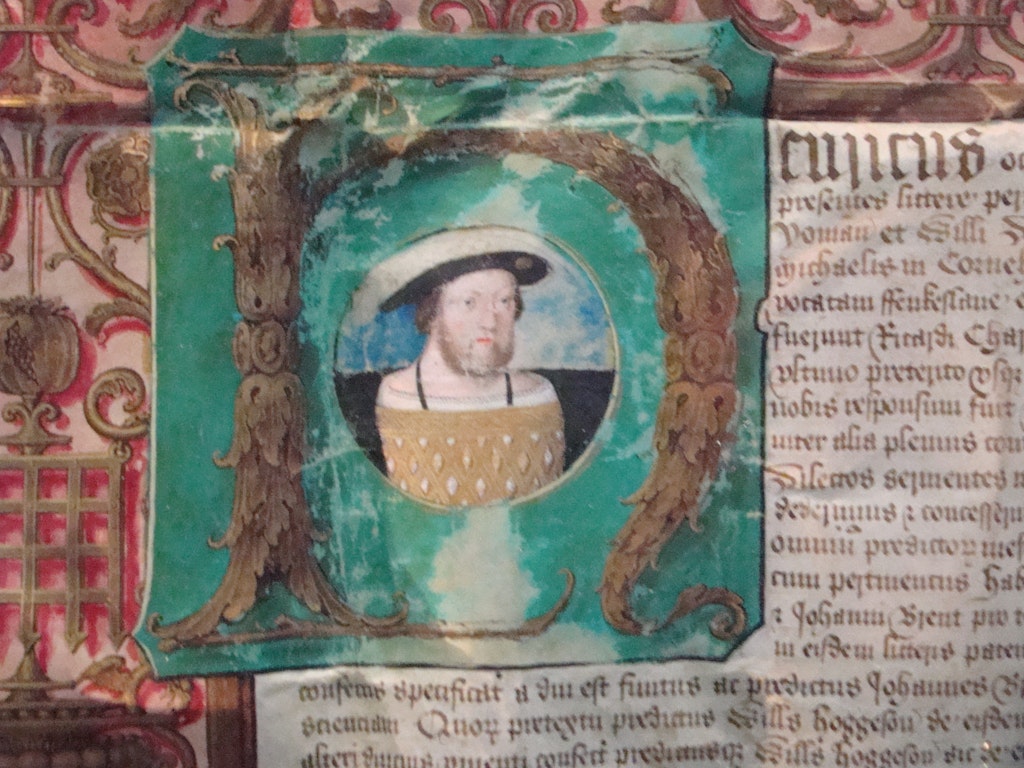
Portrait miniature of Henry VIII, from the letters patent for Thomas Foster, probably painted by Lucas Horenbout, 1524, Victoria and Albert Museum, London, MSL/1999/6. Photo by Andrew Turvey, licensed under Creative Commons
Unsurprisingly, Horenbout miniatures are marked by the techniques of the illuminator with minimal underdrawing, the use of thin transparent layers, delicate touches of shell gold (in powder form), features built up by hatching with fine brush, and hair drawn in tiny individual strokes laid in over a flat-toned underlayer.
Miniatures produced by Hans Holbein at exactly this time share the same essential techniques (unsurprisingly as it seems to have been Horenbout who instructed Holbein in the technique of producing a miniature), but they are nevertheless different in character with extensive underdrawing and greater clarity of contour.
This context would explain details of the Gallery’s portrait which would otherwise be considered anomalous in a Renaissance panel. What we see are clustered passages of real technical excellence set amongst a more workmanlike broader scheme. Gold leaf is used as well as shell gold (the faintest remnant of some originally existing painted powdered gold decoration on the jacket and hat is evident in the synchrotron gold scan). There is minimal sketchy underdrawing, evidence of the use of magnification, extremely precise minute decorative work, and great calligraphic skill. Tones are modelled using very finely hatched brush lines, rather than by direct colour mixing or application of glazes.
Many of the techniques that identify, distinguish and link the fascinating group of panels to which our Henry belongs are the medieval techniques of the limner (that’s the term for a person who paints miniatures or illuminated manuscripts), which would appear to have been adapted to panel painting from practices of the small-scale graphic work of illumination. The group was apparently produced by a workshop of generalised output, practised in the art of illumination among other things – an atelier of the Horenbout type.
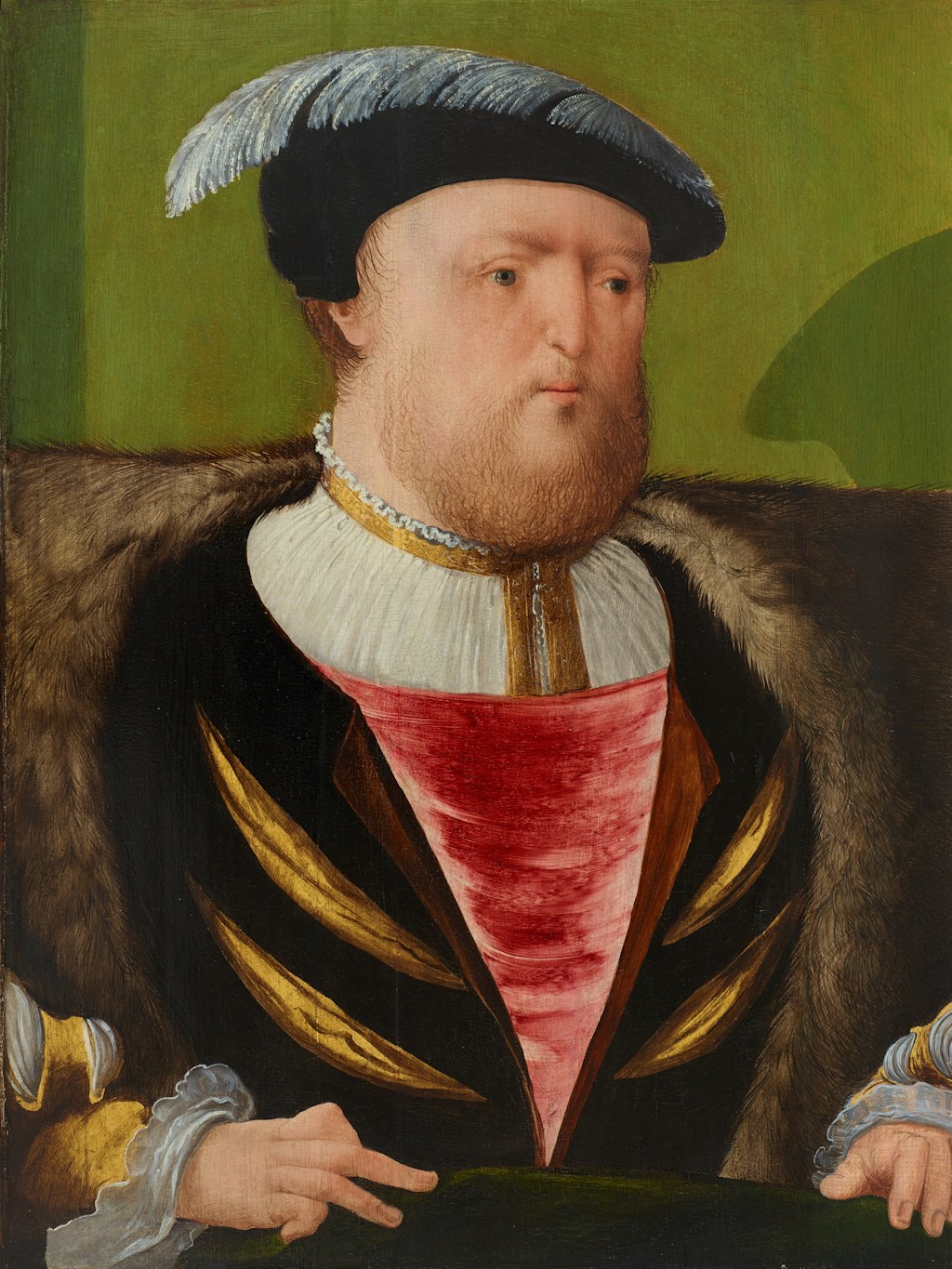
The overall design of the group follows a standard format. Sitters are shown ‘half length’ (from waist up) in a small recessed space with their hands placed on a ledge in front of them. The figure is tight within the panel with the shoulders and arms cut into. This stems from Netherlandish painting of the early 1520s, in particular the work of Bernard van Orley who – like the Horenbouts – was court painter to Margaret of Austria.
What about Henry’s pouchy, glazed eyes and small, rosebud lips? They’re certainly reminiscent of the Horenbout miniatures.
And the characteristic horizontal shoulders feathered along its length by individually drawn hairs overlapping the background? This device is distinctive and particular to Lucas Horenbout’s historic miniatures of Henry VIII. It perhaps suggests a connection and that the Horenbout composition may have been the source from which the pattern for the Henry panels was derived.
Whether in the loose graphite lines marking out the basic composition or the precise clustered strokes of the hair, we are seeing the hand of the master of a workshop such as Horenbout, or one of his assistants, a ‘humble craftsman’ or an artist of an entirely different atelier will need continuing research and careful comparisons so that more links can be drawn and – just maybe – attributions made.
The Gallery’s portrait is on display until 9 September 2018 in Henry VR.
The conservation treatment project that sparked this research was supported by the Conservation Benefactors, most notably Dorothy R Spry (in memory of), Hamish Parker, Leonard Groat and Kenneth Reed AM.